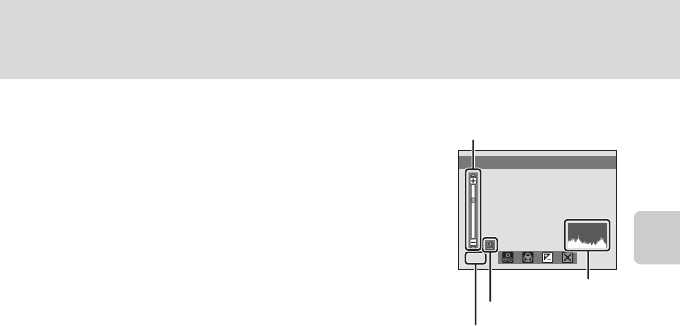
37
Adjusting Brightness, Vividness, and Hue in A (Auto) Mode
Basic Photography and Playback: A (Auto) Mode
Brightness Adjustment (Exposure Compensation)
Brightness of the entire image can be adjusted.
• To make the picture brighter, move the slider in the
“+” direction.
• To make the picture darker, move the slider in the “–”
direction.
• Exposure compensation can be set to values
between –2.0 and +2.0 EV.
D Using Exposure Compensation
The camera tends to reduce exposure when the frame is dominated by brightly lit objects and to
increase exposure when the frame is mostly dark. Positive (+) compensation may therefore be
required to capture the brilliancy of very bright objects that fill the frame (for example, sunlit
expanses of water, sand, or snow) or when the background is much brighter than the main subject.
Negative (–) compensation may be called for when large areas of the frame contain very dark objects
(for example, a swath of dark green leaves) or when the background is much darker than the main
subject.
D Using the Histogram
A histogram is a graph showing the distribution of tones in the image. Use as a guide when using
exposure compensation and shooting without the flash.
• The horizontal axis corresponds to pixel brightness, with dark tones to the left and bright tones to
the right. The vertical axis shows the number of pixels.
• Increasing exposure compensation shifts tone distribution to the right, and decreasing it shifts
tone distribution to the left.
Brightness (Exp. +/–)
+1.0
+1.0
Histogram
Slider
Exposure
compensation value
Off


















